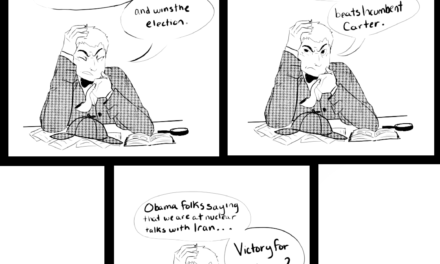It’s not uncommon to hear university students, especially those of a more artistic inclination, complaining about the apparently declining quality of modern music. From all the whining that goes on, one might think that music has reverted to its simpler, more humble roots – which is to say that cavemen have resumed banging rocks together. In fact, until recently, I too, was one of those grousing undergraduates.
Music has always been my number one passion. Although not the most talented musician, it is rare that I go a day without listening to music and I pride myself on curating the most sophisticated and culturally relevant collection of music possible. My collection of albums (yup, they’re vinyl) numbers greater than 150, and the rest of my music collection takes up countless gigabytes on my laptop.
Nothing gives me more pleasure than playing music that other people like, which is why I began learning to DJ in the first place. With the investment of just over $200 and some time over the summer that I would have been wasting anyway, I managed to acquire a DJ controller and the skill set to mix an acceptably lengthy set. Although, much like the other instruments I’ve dabbled in over the years, I’m not yet a particularly skilled DJ, I know enough to keep a party going – and isn’t that what a DJ is there for?
The most important lesson I’ve learned in my infinitesimally short tenure as a DJ is that the kind of music I would usually listen to for pleasure isn’t the kind of music that people want to dance to at a party. As much as I love finding the most obscure and musically-fascinating band possible, this just doesn’t cut it on frat row. So, to ensure my success behind the turntables, I had to teach myself as much as possible about party music – especially EDM (“electronic dance music”) and dubstep.
This was the music that I used to hate with a passion. It seemed simple: a “four on the floor” beat and some peppy synths supported by a dirty wobble bass – the kind of music a person could make in two hours behind a computer screen. I thought it lacked authenticity – why listen to some guy with a laptop when I could be listening to guitarists who had been honing their skill all their lives? It just didn’t make sense to me.
But then, more out of necessity than any desire to diversify my music taste, I started listening. I had to! No DJ worth his salt would ever go into a set not knowing every bass drop and breakdown of every song on his or her set list. So I listened, and I listened, and much to my chagrin, I started to like the same kind of music that I had eschewed and condemned only weeks earlier.
So, what changed? Why, all of a sudden, could I not get the chorus of Avicii’s “Silhouettes” out of my head? I began to understand the key aspect of fully understanding all kinds of music: context.
In his 1964 essay “The Artworld,” art critic Arthur Danto postulates that art – in this case, music – is only relevant within its own social and historical context. This context can – and should – be extended to include the intent of the musician in creating his work of art.
Consider Pink Floyd’s “The Dark Side of the Moon.” Although one of the most influential concept albums to emerge from the 1970s, only a fool would think to play it at a party. Similarly, EDM and dubstep producers such as Tiësto, Skrillex and Deadmau5 set out to make the ultimate party music – and they’ve certainly done a good job of it. Their music is catchy and lays down a great beat for dancing. It’s high-energy and fun to listen to – in the right context, that is.
The same is true of every other genre that music-snobs (myself included) deem trash. We audiophiles seem to think that every track of every album was composed with the intent of being high art. This simply isn’t true, and such an assumption has a way of devaluing the work that other – perhaps more “mainstream” – musicians put into their product. Does this mean that I’m now a huge Justin Beiber fan? Certainly not, but I can dig what he’s getting at.
It’s all about context. Listening to the wrong kind of music at the wrong time is a surefire way to hate every note of it. We, as consumers of music, – be it mainstream pop hits or obscure indie – should strive to diversify our tastes by attempting to understand the context of “bad” music. There is good music and there is bad music – there is no question about that – but we haven’t “lost” music. Not by a long shot.
Asst. Editorials Editor Nicholas Bradley is a College sophomore from Skillman, N.J.
The Emory Wheel was founded in 1919 and is currently the only independent, student-run newspaper of Emory University. The Wheel publishes weekly on Wednesdays during the academic year, except during University holidays and scheduled publication intermissions.
The Wheel is financially and editorially independent from the University. All of its content is generated by the Wheel’s more than 100 student staff members and contributing writers, and its printing costs are covered by profits from self-generated advertising sales.



